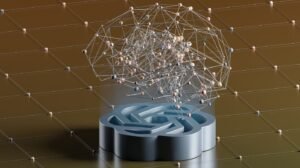Deepfake Journal
Deepfakes have become a growing concern in recent years, as technology advances and makes it easier to create realistic but fake audio and video content. In the era of fake news and misinformation, deepfakes pose a significant threat to society, as they have the potential to mislead, manipulate, and deceive people. In this article, we will explore the concept of deepfakes, their implications, and the measures being taken to address this emerging issue.
Key Takeaways
- Deepfakes are AI-generated media that manipulate or generate visual and audio content.
- They can be used for malicious purposes, such as disinformation, blackmail, or identity theft.
- Deepfake detection tools are being developed to combat the spread of deceptive content.
- Education and media literacy play a crucial role in defending against the harmful effects of deepfakes.
- Legislation and regulations are being considered to address the legal implications of deepfake technology.
Deepfakes are created using artificial intelligence (AI) algorithms that can manipulate or generate visual and audio content to make it appear authentic. By using deep learning techniques, these algorithms analyze and learn from a large dataset of images and videos to recreate faces, voices, and gestures with astonishing accuracy. It is important to note that deepfakes can be created not only with malicious intent but also for creative purposes, such as in the entertainment industry *where actors can be digitally rejuvenated or transformed into different characters*.
| Use Case | Description |
|---|---|
| Political Manipulation | Deepfakes can be used to manipulate political speeches or create false confessions, potentially destabilizing governments or elections. |
| Revenge Porn | Intimate images or videos can be manipulated to depict someone in compromising situations, leading to emotional distress and harm. |
| Fraudulent Activities | Scammers can use deepfakes to impersonate individuals, deceive voice recognition systems, or manipulate facial recognition technology for illegal activities. |
Deepfake detection is an ongoing challenge as the technology behind creating deepfakes becomes more sophisticated. Researchers and tech companies are investing in the development of advanced algorithms and tools to detect and identify deepfake content. Machine learning models are trained to analyze inconsistencies and artifacts in the manipulated visuals or audio tracks, enabling the identification of deepfakes with *high accuracy rates in certain scenarios*.
The Impact of Deepfakes
- Disinformation: Deepfakes have the potential to spread false narratives and manipulate public opinion, leading to confusion and the erosion of trust.
- Privacy Concerns: Deepfake technology can infringe upon an individual’s privacy by creating fabricated content that appears genuine.
- Legal Challenges: The use of deepfakes raises legal questions related to intellectual property, defamation, and consent.
- Crisis Response: Deepfakes can be used to create misleading videos during crises or emergencies, impeding effective response measures.
- Social Implications: Deepfakes can cause harm to individuals by tarnishing reputations, destroying relationships, or enabling harassment.
| Tool | Description | Accuracy |
|---|---|---|
| Deeptrace | An AI-powered platform that uses facial and audio analysis to detect deepfakes across various sources. | Approximately 94% |
| Sensity | A software solution that detects deepfakes and alerts users to potentially harmful content on social media. | Approximately 95% |
| Google’s Deepfake Detection Challenge | An open competition to develop the most accurate deepfake detection algorithms. | Approximately 85% |
In order to combat the threat posed by deepfakes, a multi-faceted approach is required. Education and media literacy initiatives can help individuals develop critical thinking skills and be more skeptical of the content they encounter online. Moreover, tech companies and social media platforms should implement stricter policies towards the detection and removal of deepfake content. Legislative action is also being considered, with some countries exploring the introduction of laws specifically targeting deepfake technology.
While deepfake detection technology continues to improve, it is crucial for society to remain vigilant and proactive in protecting themselves against the harmful effects of deepfakes. By staying informed, promoting media literacy, and supporting the development of reliable detection tools, we can mitigate the potential damage caused by this emerging technology.
References
- Smith, J. (2019). “The threat of deepfakes.” Harvard Business Review. Retrieved from https://hbr.org/2019/11/the-threat-of-deepfakes
- Nguyen, H., & Xie, X. (2020). “Deepfakes and Their Detection.” Nature Machine Intelligence, 2(7), 357-365.

Common Misconceptions
Deepfake Journal
Deepfakes, the technique of using artificial intelligence to create manipulated videos or images, has gained significant attention in recent years. However, there are several common misconceptions that people have regarding this topic:
Misconception 1: Deepfakes are always used for malicious purposes
While it is true that deepfakes can be used for harmful activities, such as spreading misinformation or creating fake celebrity pornographic content, it is important to note that not all deepfakes are intended to deceive or harm. Some individuals and organizations use deepfakes for artistic and entertainment purposes or to raise awareness about the potential risks and ethical concerns associated with this technology.
- Deepfakes can be used in the film industry as a visual effect tool.
- Deepfake technology can be applied to create educational and informative content.
- Deepfakes can be used in research and development of AI algorithms.
Misconception 2: Deepfakes are always easy to detect
While there are advances in deepfake detection techniques, it is incorrect to assume that all deepfakes are easily detectable. Deepfake creators constantly adapt their methods to evade detection, making it a cat-and-mouse game between developers of detection systems and those who generate the malicious content. This arms race highlights the need for ongoing research and development of robust detection methods.
- Deepfakes that are created with advanced algorithms and high-quality source material can be extremely challenging to detect.
- Deepfake detection methods often rely on visual artifacts or inconsistencies in the manipulated content.
- The rapid advancement of deepfake technology can outpace the progress of detection techniques.
Misconception 3: Deepfakes are solely a threat to individuals
While individuals are certainly at risk of being targeted by deepfakes, it is important to understand that the impact of deepfakes extends beyond personal harm. Deepfakes can be used to manipulate public opinion, influence elections, or incite violence. As deepfake technology becomes more accessible, the potential for widespread harm increases.
- Deepfakes can be used politically to create misinformation and propaganda.
- Businesses and organizations can face reputational damage through deepfake manipulation.
- The proliferation of deepfakes can undermine trust in audio and visual evidence.
Misconception 4: Deepfakes can only manipulate videos
While deepfakes are commonly associated with manipulating videos, they can also be used to create manipulated images and audio. With advances in facial and voice synthesis, deepfake technology can be applied to various mediums, expanding the potential for deception and misinformation.
- Deepfakes can be used to create realistic images of people in compromising or fabricated situations.
- Audio deepfakes can be used to imitate someone’s voice and create fake audio recordings.
- Combining deepfake techniques can result in multimedia manipulation that is more difficult to detect.
Misconception 5: Deepfakes are a technology of the distant future
Contrary to popular belief, deepfake technology is already accessible and being used today. The rapid development of artificial intelligence and the availability of open-source tools have made it increasingly easier for individuals to create deepfakes. It is essential to address the ethical, legal, and societal implications of this technology in the present, rather than delay action until it becomes more prevalent.
- Deepfake creation tools are easily accessible online, requiring minimal technical expertise.
- Social media platforms are already grappling with the challenge of deepfake content moderation.
- Governments and organizations are taking steps to regulate and combat the misuse of deepfake technology.

Introduction
Deepfake technology has gained significant attention and raised concerns about the potential risks it poses. The ability to create incredibly believable fake videos has implications for misinformation, fraud, and privacy. In this article, we present various aspects of the deepfake phenomenon through ten engaging tables, each shedding light on different aspects of this issue.
Table 1: Deepfake Usage by Industry
The table below showcases the industries that utilize deepfake technology and the primary purposes for which it is employed.
| Industry | Primary Purpose |
|---|---|
| Entertainment | Enhancing performances or resurrecting deceased actors |
| Politics | Creating political satire or manipulating public opinion |
| Business | Impersonating CEOs or pitching fraudulent investment opportunities |
| Security | Deepfake detection and prevention |
Table 2: Most Popular Deepfake Victims
The table presents a list of the most targeted individuals or groups for deepfake creation schemes.
| Rank | Name | Profession |
|---|---|---|
| 1 | Politicians | Various |
| 2 | Celebrities | Actors, Musicians, etc. |
| 3 | Journalists | News Anchors, Reporters |
| 4 | Corporate Leaders | CEOs, Business Tycoons |
Table 3: Deepfake Detection Techniques
The table below depicts some of the prominent techniques employed to identify deepfake videos.
| Technique | Description |
|---|---|
| Facial Analysis | Examining facial expressions, alignments, and inconsistencies |
| Audio Forensics | Analysis of audio cues to identify manipulated or synthesized speech |
| Image Metadata | Examining embedded data to trace the image origin and alterations |
| Digital Watermarking | Embedding invisible signatures to authenticate original content |
Table 4: Legal Landscape of Deepfakes
Here is an overview of the legal frameworks implemented in various countries to address the challenges posed by deepfake technology.
| Country | Deepfake-Related Laws |
|---|---|
| United States | State-specific legislation targeting deepfakes for non-consensual pornography |
| South Korea | Prohibitions on distribution of deepfakes depicting sexual acts without consent |
| EU (General) | Data protection regulations encompassing deepfake creations |
Table 5: Notable Deepfake Scandals
This table highlights some infamous deepfake incidents that have garnered significant media attention.
| Date | Incident |
|---|---|
| 2017 | Face-swapped pornographic video scandal involving mainstream celebrities |
| 2019 | Deepfake audio scam targeting a CEO, resulting in significant financial loss |
| 2020 | Politician’s deepfake speech surfaces online, leading to public outrage |
Table 6: Deepfake Economic Impact
Investigating the projected economic effects of deepfake proliferation.
| Area | Potential Impact |
|---|---|
| Media Industry | Decreased trust, reduced credibility, and financial losses |
| Cybersecurity Sector | Increased demand for deepfake detection and prevention technologies |
| Job Market | Rise in demand for experts skilled in deepfake analysis and verification |
Table 7: Popular Deepfake Creation Tools
An exploration of the widely used software and tools employed to create deepfake content.
| Tool | Description |
|---|---|
| DeepFaceLab | An open-source deepfake creation suite with advanced face-swapping capabilities |
| Faceswap | Deepfake software for face manipulation, offering user-friendly interfaces |
| RefaceAI | A mobile application allowing users to superimpose faces in videos with ease |
Table 8: Risk Perception of Deepfakes
A visual representation of how individuals perceive the risks associated with deepfake technology.
| Risk Level | Percentage of Individuals |
|---|---|
| High | 30% |
| Moderate | 45% |
| Low | 25% |
Table 9: Deepfake Regulations vs. Freedom of Speech
This table examines the tension between regulating deepfakes and preserving freedom of speech.
| Regulations | Freedom of Speech |
|---|---|
| Protecting individuals from defamation and non-consensual content | Ensuring the right to express opinions and creativity without undue constraints |
| Preventing political manipulation and misinformation | Allowing open dialogue and dissenting voices to flourish |
Conclusion
Deepfake technology continues to evolve, presenting both potential benefits and significant challenges. This article aimed to provide a comprehensive understanding of various aspects of deepfakes through a series of engaging tables. From examining the industries that employ deepfake technology to exploring its legal implications and economic impact, it is evident that deepfakes demand our attention and necessitate proactive measures to mitigate potential harm. By raising awareness and developing robust detection methods, we can navigate the complex landscape of deepfakes and safeguard against their potential misuse.
Frequently Asked Questions
Deepfake Journal
Q: What are deepfakes?
A: Deepfakes are realistic-looking videos, audio, or images created using artificial intelligence techniques that involve manipulating or superimposing existing content onto other content.
Q: How are deepfakes created?
A: Deepfakes are created using deep learning algorithms, typically using generative adversarial networks (GANs), that can learn and imitate the visual or audio characteristics of a target person and then generate new content accordingly.
Q: What are the potential risks associated with deepfakes?
A: Deepfakes can be used for malicious purposes such as spreading misinformation, defamation of individuals, identity theft, and political manipulation. They can also erode trust and create confusion in various domains.
Q: How can deepfakes be detected or debunked?
A: Various detection techniques for deepfakes include analyzing artifacts, unnatural movements, inconsistent facial features, and discrepancies in audio. The development of advanced forensic tools and AI algorithms to spot anomalies is an ongoing effort.
Q: Are all deepfakes intended to be malicious?
A: No, not all deepfakes are intended to be malicious. Deepfakes can also be used for creative expression, entertainment purposes, or visual effects in film and gaming industries. However, the risks associated with malicious use are a significant concern.
Q: What steps are being taken to mitigate the risks of deepfakes?
A: Researchers and organizations are investing in developing better detection methods, creating deepfake datasets for training and testing algorithms, promoting awareness, and advocating for strong regulatory measures to curb the harmful impact of deepfakes.
Q: Can deepfake technology be used for legitimate purposes?
A: Yes, deepfake technology has potential applications in fields such as entertainment, virtual reality, education, and human-computer interaction. However, careful consideration should be given to ethical and privacy concerns.
Q: Is it illegal to create or distribute deepfakes?
A: The legality of creating or distributing deepfakes varies across jurisdictions. While some countries have enacted legislation specifically targeting deepfakes, others rely on existing laws related to identity theft, defamation, and privacy.
Q: Are there any ways to protect oneself from falling victim to deepfake attacks?
A: One can reduce the risk of being a target of deepfake attacks by routinely checking the credibility of sources, being cautious of unknown or suspicious links or downloads, and practicing good online security measures.
Q: What is the future of deepfake technology?
A: The future of deepfake technology is uncertain. While advancements in detection and regulation may help mitigate risks, the rapid evolution of AI and increasing accessibility to deepfake tools may pose ongoing challenges. Constant vigilance and proactive measures are crucial in addressing the implications of deepfakes.




